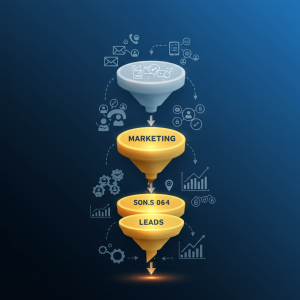Is Push Marketing the Same as Outbound Marketing?

Marketing terminology sometimes creates confusion with overlapping concepts that appear similar yet contain subtle but important distinctions. Push marketing and outbound marketing represent a perfect example of this phenomenon. While many professionals use these terms interchangeably, understanding their nuances can significantly impact your marketing strategy development.
The Foundation of Outbound Marketing
Outbound marketing encompasses traditional marketing approaches where businesses initiate contact with potential customers through various channels. This broad strategy includes tactics like cold calling, email blasts, trade shows, TV commercials, print advertisements, and direct mail campaigns. The fundamental characteristic of outbound marketing lies in its initiator – the business reaches out to prospects rather than waiting for them to discover the brand organically.
The outbound approach dominated marketing landscapes for decades before digital transformation introduced alternatives. Its proactive nature allows businesses to control messaging timing, scale quickly, and reach broad audiences. However, this approach faces increasing challenges in today’s fragmented media environment where consumer attention becomes increasingly scarce and expensive.
According to research from McKinsey & Company, effective outbound marketing now requires deeper targeting precision and messaging relevance than ever before. Simply broadcasting messages widely no longer yields the results it once did.
Understanding Push Marketing
Push marketing refers specifically to promotional strategies directed at intermediaries within distribution channels rather than end consumers. This approach “pushes” products through distribution networks by incentivizing wholesalers, distributors, and retailers to stock, promote and sell specific products.
Typical push marketing tactics include trade discounts, sales incentives for channel partners, cooperative advertising allowances, point-of-purchase displays, and sales training programs for distributor staff. The goal centers on securing distribution channel support and prominent shelf placement or promotion by intermediaries.
For manufacturers of consumer packaged goods, push strategies prove particularly important. As Harvard Business Review research demonstrates, channel relationships significantly impact sales performance even in today’s digital marketplace. Products with strong push marketing often receive better positioning within retail environments, leading to competitive advantages at crucial purchase decision moments.
Key Differences Between Push and Outbound Marketing
While both approaches involve proactive efforts initiated by businesses, important distinctions exist:
Push marketing focuses primarily on distribution channel partners rather than end consumers. The audience consists of businesses that help move products toward consumers rather than the consumers themselves. In contrast, outbound marketing directly targets potential customers with messages designed to generate immediate interest or action.
The outcomes also differ considerably. Push marketing success measures include distribution breadth, shelf positioning, and channel partner enthusiasm. Outbound marketing effectiveness typically appears in lead generation metrics, brand awareness measurements, and direct sales figures.
Additionally, push marketing represents just one component of channel marketing strategy (alongside pull marketing), while outbound marketing exists as a counterpart to inbound marketing in the broader marketing ecosystem.
When to Use Each Approach
For businesses selling through distribution channels like retail stores or value-added resellers, push marketing remains essential regardless of digital transformation. Even direct-to-consumer brands increasingly recognize the value of strategic retail partnerships supplemented by effective push marketing.
Outbound marketing serves nearly every business in some capacity, though its prominence within marketing strategy varies widely based on business model, industry, and target audience characteristics. B2B enterprises with clearly defined prospect universes often maintain significant outbound programs despite inbound marketing’s growing popularity.
At outboundmarketo.com, we’ve found that integrating both push elements and broader outbound tactics often creates synergistic effects, particularly for businesses with complex distribution models.
Developing an Integrated Approach
Understanding the relationship between push marketing and outbound marketing allows marketers to develop more cohesive strategies. Rather than viewing them as separate entities, consider how they can reinforce each other:
Coordinated messaging across both channel partners and end consumers creates powerful reinforcement effects. When distributors hear the same value propositions they’re delivering to customers in your direct advertising, it strengthens their confidence in your brand positioning.
Similarly, outbound marketing that acknowledges and leverages channel partners can enhance those relationships while simultaneously building consumer awareness. For instance, retail-specific landing pages mentioned in broadcast advertising can direct consumers to appropriate purchase channels while supporting retailer traffic goals.
Measuring Success Appropriately
Different strategic approaches require appropriate measurement frameworks. Push marketing performance indicators typically include metrics like distribution breadth (percentage of potential retailers carrying products), share of shelf, retailer promotion participation, and channel partner satisfaction.
Outbound marketing metrics focus more on customer acquisition costs, lead generation volume, conversion rates, and brand awareness metrics. Recognizing these different measurement requirements helps marketing teams avoid misapplying metrics across categories.
The distinction between push marketing and outbound marketing ultimately matters most in strategic planning and performance measurement. While conceptual overlap exists, the practical implementation differences significantly impact resource allocation and success evaluation.
For businesses seeking to optimize their marketing approach, understanding both concepts and their interrelationship provides a stronger foundation for comprehensive strategy development.





